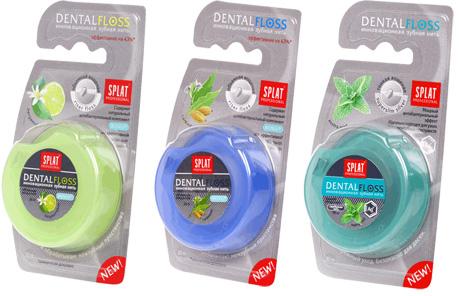The content of the article
Among the oral care products, dental flosses or special flosses have recently appeared oral b. The need for their application is often questioned by the layman. Why do you need dental floss if you already brush your teeth daily and several times with a good brush and expensive toothpaste? Moreover, use a quality rinse aid for complete cleaning ... It turns out that there is a need. And dentists regularly remind of her.
Do I need dental floss
While brushing your teeth, you can remove soft deposits on the three sides of each molar — the front and back surfaces, as well as the top. But the interdental spaces remain inaccessible to you. When food gets stuck in them, you can somehow manage it with a toothpick (by the way, dentists strongly recommend that they not be used because of the risk of damage to the gums and enamel). But what to do with the plaque?
With soft deposits no rinse can cope, since mechanical action is required. A certain way out of the situation is the irrigator - a device that delivers water under pressure. But its effectiveness is greatly exaggerated, and a stream of water simply does not penetrate into the narrowest interdental space. Therefore, the only right decision to clean the hidden surfaces of teeth is flossing - that is, cleaning them with dental floss.

Types of Flosses
Various types of flosses of both worthy and dubious quality are presented on the market. We recommend purchasing only those offered by reputable manufacturers. High-quality dental floss is made from thin synthetic filaments - usually nylon or teflon. In the structure of one thread there can be many fibers, which reduces the likelihood of injury to the gums, or one dense fiber.
Flosses are flat and round in shape. The former may even seem “flattened” - this is how the dental tape looks, that is, a thread designed to clean a very narrow interdental space. Additionally, flosses are treated with special impregnations, their surface is waxed. This ensures, firstly, the ease of sliding of the thread in the interdental space. And secondly, it brings an additional therapeutic effect. For example, leading manufacturers apply a fluorine compound to the surface of flosses. It additionally strengthens the enamel.
There are also special threads for people wearing braces, dentures or implants. To remove food debris from under the elements of their structures, the floss is equipped with a rigid tip, allowing you to take it where necessary.
Features of use
The question of how to use dental floss correctly is no less important than the fact of its use. The fact is that with improper use, the accessory will not only not provide the expected impact, but will also cause injury to the gums. Therefore, it is impossible to make significant efforts when using floss, and if blood appears from the gums, it is necessary to stop the procedure, rinse your mouth with warm salt water and continue only after the bleeding stops.
The technique of correct flossing is as follows.
- Take a thread about 40 cm long.Why so much? - you ask? Because this procedure is hygienic, and to clean each interdental space, you need to use a clean piece of floss. For cleaning the entire oral cavity, just a thread with a length of 40 cm is just enough.
- Make two turns of thread on the middle finger of the right hand. Leave your index finger free to make it easier to control the process. Wrap the thread on your left hand so that the central piece is 8-10 cm long.
- Start cleaning with the upper teeth: gently insert the floss into the interdental space of the anterior molars. Take it all the way to the gum, but don't push it. Press the floss to the surface of one tooth and move it up and down 5-7 times. Now press it to the surface of the other tooth and make as many careful movements.
- Remove the floss from this tooth gap, rewind the used area on the finger of the right hand.
- Insert a clean thread into the next gap and repeat the movement again.
This is an example technique for flossing. Photos of our review will demonstrate the technology clearly.

How often to use dental floss? Use the rules above and then you will always have teeth clean and tidy. Ideally, this should be done after each meal, especially if you feel pieces of food between your teeth. If it is not possible to do this, be sure to carry out a full cleaning in the evening before going to bed. It is convenient to first brush your teeth, then floss, and only then rinse with a special balm.

